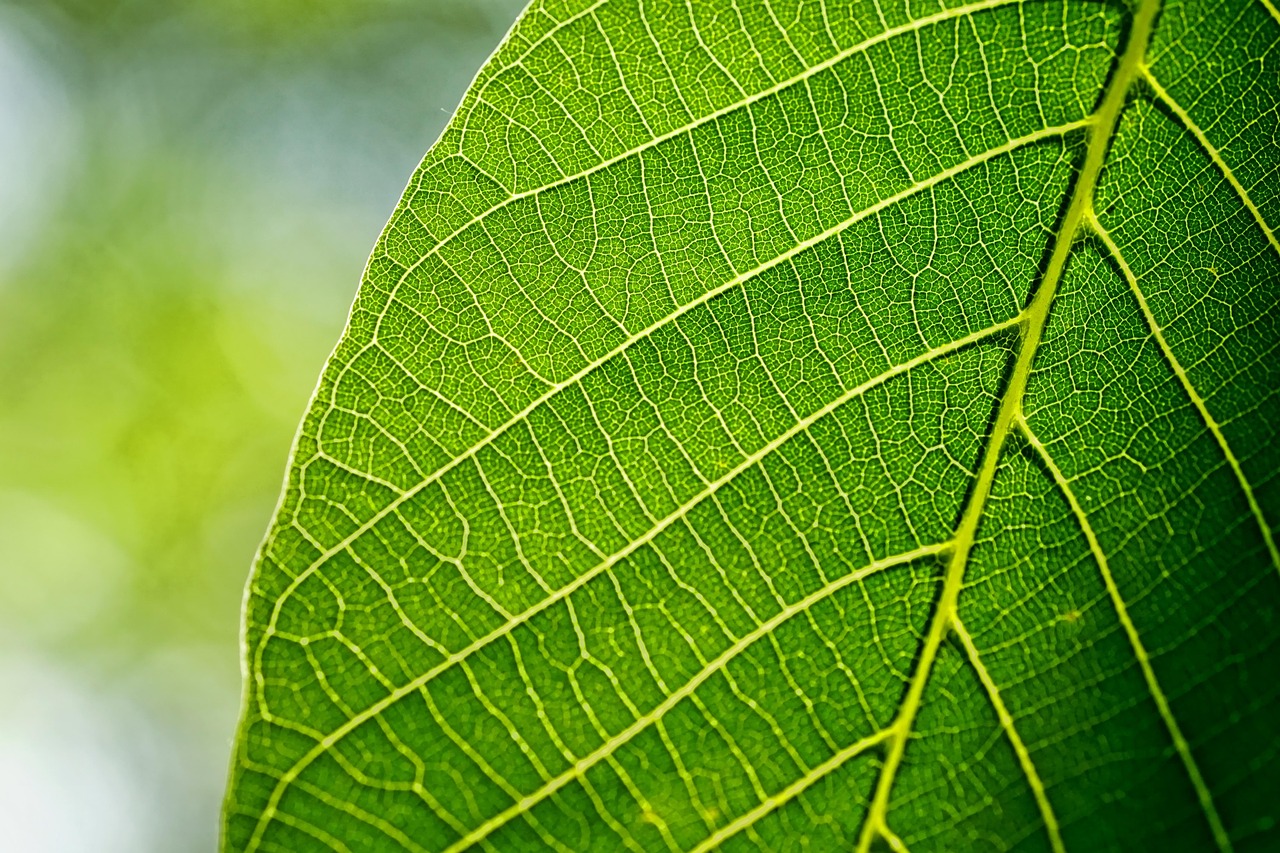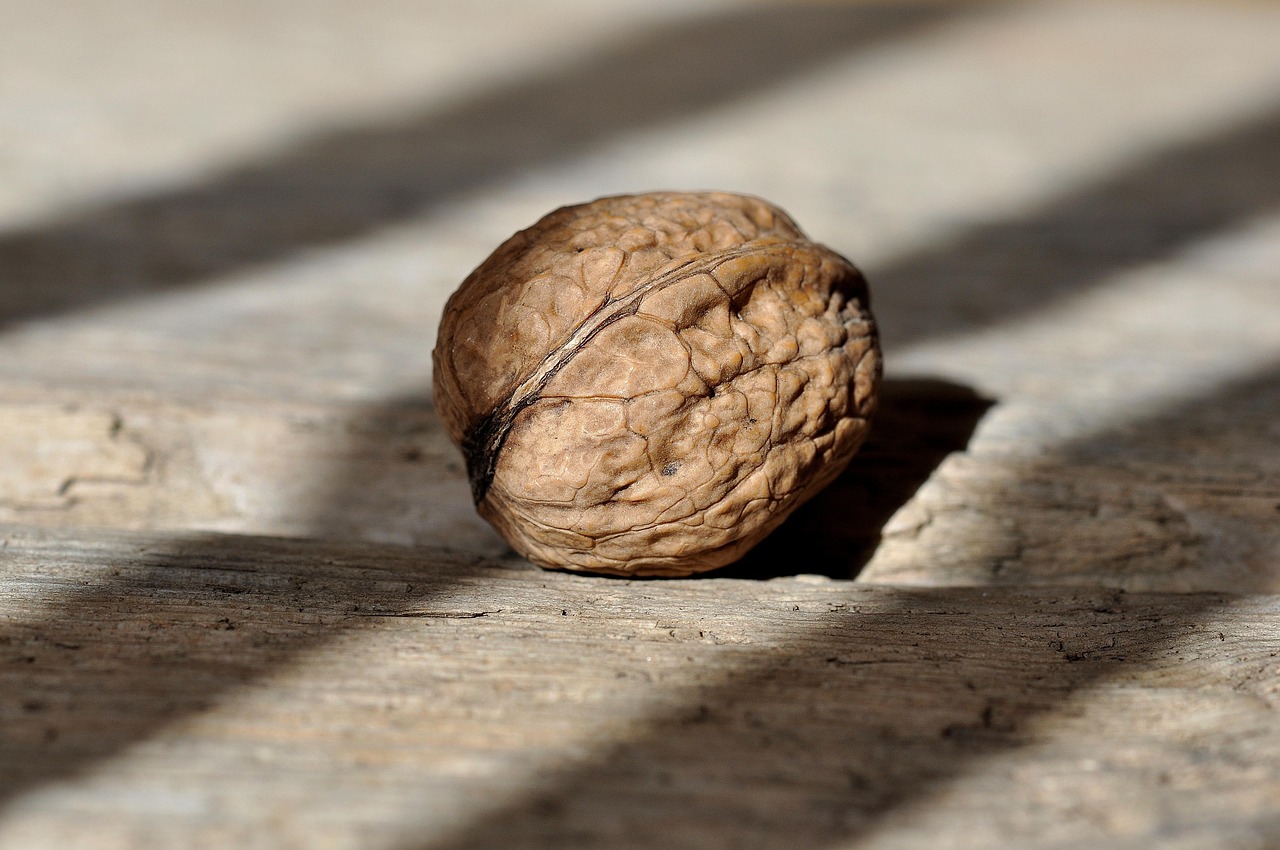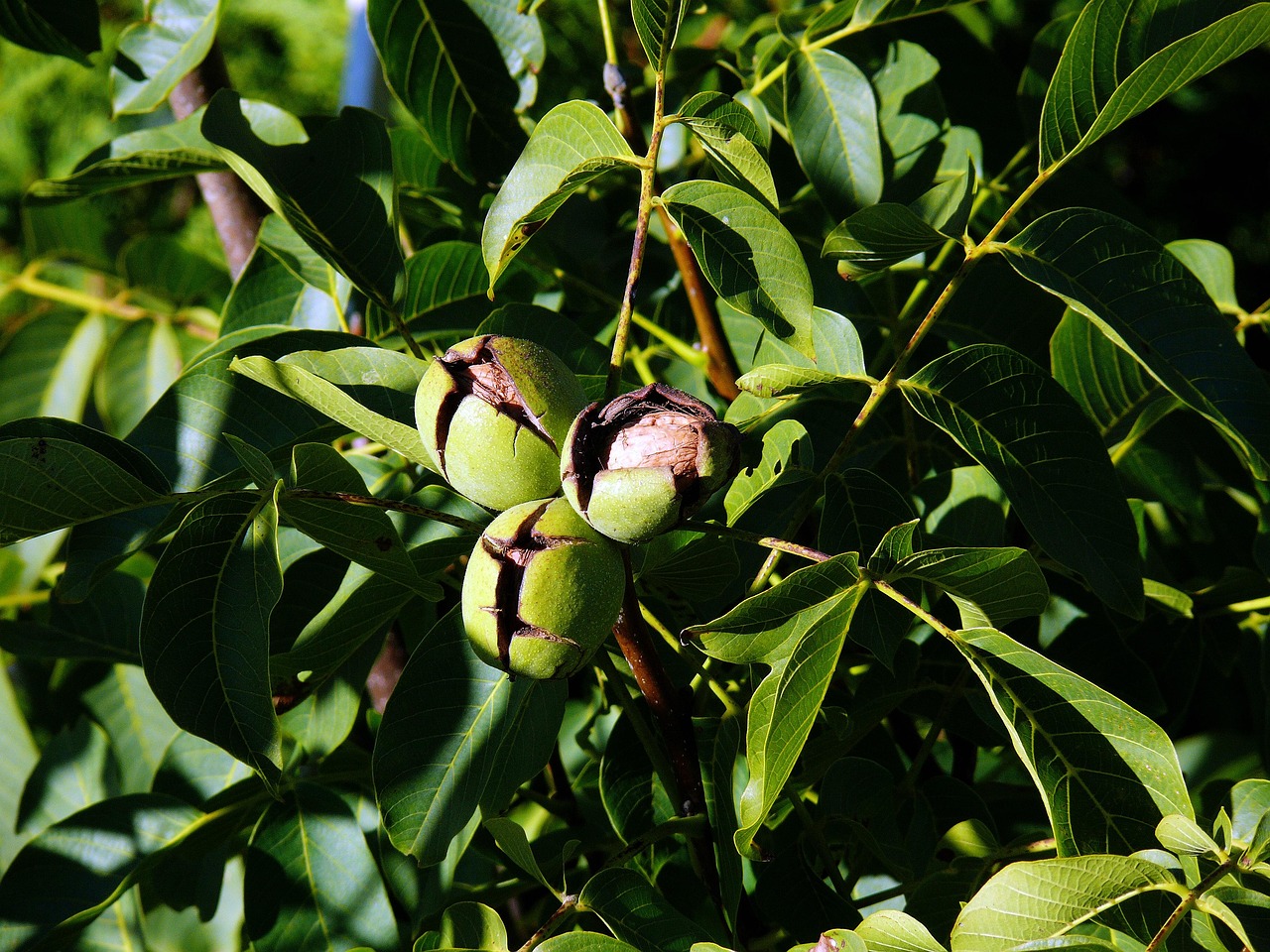Maximize your walnut tree’s nut yield with essential pruning strategies. Proper pruning improves sunlight, air flow, and nutrient distribution, promoting healthier, more productive trees. Timing, techniques, and tools are critical to avoid damage and disease, ensuring larger, more abundant nuts season after season for successful orchard management.
Walnut trees, known for their delicious nuts and valuable timber, require careful management to maximize their yield. Among various cultivation practices, pruning stands out as a crucial technique. Pruning not only shapes the tree but also promotes overall health. This is particularly important for walnut trees, which can grow quite large and dense over time.

Understanding the growth habits of walnut trees is essential for effective pruning. These trees typically grow tall and wide, which can lead to overcrowding of branches. When branches are too close together, they compete for sunlight and nutrients. This competition can hinder nut production. Proper pruning helps manage this growth, ensuring that each branch receives adequate light and air.
Benefits of Pruning Walnut Trees
Pruning walnut trees offers several benefits that contribute to increased nut production. Here are some of the primary advantages:
- Improved Light Exposure: Pruning opens up the canopy, allowing sunlight to reach all parts of the tree. This is vital for photosynthesis, which fuels nut development.
- Enhanced Air Circulation: Good air flow reduces the risk of diseases. Pruning helps prevent moisture buildup, which can lead to fungal infections.
- Better Nutrient Distribution: With fewer branches competing for nutrients, the tree can allocate resources more effectively, resulting in healthier nuts.
- Increased Yield: Healthy trees tend to produce more nuts. Regular pruning can lead to a noticeable increase in yields over time.
The timing and technique of pruning are critical factors that influence the effectiveness of this practice. It is generally recommended to prune walnut trees during their dormant season, which is late winter or early spring before new growth begins. This timing minimizes stress on the tree and allows it to heal quickly after cuts.

Pro-Tips
- When I first started pruning, I underestimated how aggressive I could be. Now I know that less is more—over-pruning can stress the tree and reduce yield. I always aim to remove only the necessary branches for better light and airflow.
- Initially, I used dull tools, which caused ragged cuts and increased healing time. Investing in sharp, clean pruning equipment has made a huge difference in the tree’s recovery and health.
- At first, I pruned during the growing season out of convenience, but I learned that late winter pruning minimizes stress and promotes healthier growth. Timing is everything!
- When I wasn’t sure which branches to remove, I learned to look for dead, diseased, or crowded growth. Removing these helped improve air circulation and prevented disease spread.
- I used to forget to keep tools sanitized, which sometimes spread diseases. Now, I always disinfect my pruning shears between cuts to protect my trees.
- In the beginning, I ignored the importance of nutrients post-pruning. I now feed my trees with balanced fertilizers after pruning to support quick recovery and nut development.
- At first, I didn’t pay enough attention to the growth stages of my walnut trees. Understanding whether they are juvenile, early mature, or mature helps me tailor my pruning approach for better yields.
- When I first harvested nuts, I rushed the process. Now, I ensure proper curing and storage, which improves nut quality and prevents pest issues.
- Finally, I underestimated the value of local resources. Attending workshops and consulting with experts has helped me improve my pruning skills and overall orchard management.
Pruning Techniques for Walnut Trees
There are several pruning techniques that can be applied to walnut trees. Each technique serves a specific purpose and can be tailored to the tree’s growth stage and health. Here are some common methods:
- Thinning: This involves removing selected branches to improve light penetration and air circulation within the canopy.
- Heading Back: This method shortens branches by cutting them back to a bud. It encourages bushier growth and more branching.
- Crown Reduction: This technique reduces the overall height of the tree while maintaining its shape. It’s useful for managing very tall walnut trees.
When executing these techniques, it is essential to use sharp, clean tools. This practice minimizes damage to the tree and helps prevent disease transfer. Additionally, cuts should be made at a slight angle to facilitate water runoff and reduce decay.
Common Mistakes in Pruning
While pruning can significantly enhance walnut production, there are common mistakes that gardeners should avoid:

- Over-Pruning: Removing too many branches can stress the tree and reduce nut yield. It is important to prune judiciously.
- Pruning at the Wrong Time: Cutting branches during the growing season can expose the tree to stress and potential disease.
- Ineffective Cuts: Poorly made cuts can lead to wounds that take longer to heal, increasing the risk of infection.
Proper education on pruning techniques is vital for anyone looking to improve their walnut tree’s nut production. Workshops and local agricultural extensions often provide valuable resources for both novice and experienced growers.
Conclusion on Pruning Practices
The practice of pruning walnut trees is an art that requires knowledge and skill. By understanding the benefits and techniques involved, growers can significantly enhance their nut production. Making informed decisions about when and how to prune will lead to healthier trees and abundant harvests.
Understanding Walnut Tree Biology
To effectively prune walnut trees, it is essential to understand their biological makeup. Walnut trees, particularly the English and black walnut varieties, have unique growth patterns and physiological characteristics. Recognizing these traits can help in applying the right pruning techniques at the correct times.

Walnut trees are deciduous and have a deep root system. This allows them to access water and nutrients from deeper soil layers. The trees usually grow in a straight fashion, developing a central leader with lateral branches extending outward. This structure is critical for nut production, as the tree’s canopy plays a vital role in light absorption.
Growth Stages of Walnut Trees
Walnut trees go through several growth stages, each requiring different care and pruning approaches. Understanding these stages is crucial for optimizing nut production.
- Juvenile Stage: In this stage, which lasts for the first 5 to 7 years, the focus should be on establishing a strong central leader and developing a good branch structure.
- Early Maturity: From year 7 to about year 15, the tree begins to produce nuts. Pruning during this stage should emphasize shaping the tree for optimal light exposure.
- Mature Stage: After 15 years, walnut trees reach their peak nut production. Maintenance pruning is critical to remove any dead or diseased branches and ensure continued health.
Tools and Equipment for Pruning
Using the right tools is essential for successful pruning. Proper equipment not only makes the job easier but also minimizes damage to the tree.
- Pruning Shears: Ideal for small branches and delicate cuts.
- Loppers: Useful for cutting larger branches that are too thick for shears.
- Saws: A fine-toothed saw is necessary for heavy-duty pruning of larger limbs.
- Safety Gear: Always wear gloves, goggles, and protective clothing to prevent injuries.
Before starting the pruning process, ensure all tools are sharp and clean. This practice helps make smoother cuts and reduces the risk of disease transmission between plants.
Timing Your Pruning Efforts
The timing of pruning is crucial for maximizing nut production in walnut trees. Pruning at the right time allows the tree to recover quickly and promotes healthy growth.
As mentioned previously, late winter to early spring is generally considered the best time for pruning. However, there are specific guidelines within this timeframe:
- Dormant Pruning: Conduct pruning when trees are fully dormant, typically in late February to early March. This minimizes sap loss and stress on the tree.
- Avoiding Blooming Season: Refrain from pruning during or just before flowering, as this can negatively impact nut set.
- Post-Harvest Pruning: In some cases, light pruning might be carried out after harvest in late autumn to prepare for the next season.
Identifying Healthy vs. Unhealthy Growth
A key aspect of effective pruning is identifying which branches to remove. Not all growth is beneficial; some branches may hinder production or compromise tree health.
| Growth Type | Description | Action |
|---|---|---|
| Healthy Growth | Strong, upright branches with no signs of disease or damage. | Maintain and prune lightly to shape. |
| Dead or Dying Branches | Branches that are brown, brittle, or lack leaves. | Remove immediately to prevent disease spread. |
| Crowded Branches | Branches growing too closely together. | Thin out to improve air circulation and light exposure. |
| Suckers | New shoots emerging from the base or roots. | Remove to redirect energy to productive branches. |
By recognizing these types of growth, growers can make informed decisions on which branches to prune. This targeted approach ensures that only unhealthy or unproductive growth is removed, leading to better overall tree health and nut production.
The Role of Nutrients in Pruning Success
Nutrient management plays a significant role in the effectiveness of pruning practices. A well-fed walnut tree is more capable of recovering from pruning stress and producing healthy nuts.
Key nutrients that walnut trees require include:
- Nitrogen: Essential for leaf growth and overall tree vigor.
- Phosphorus: Important for root development and flower production.
- Potassium: Helps in fruit development and enhances disease resistance.
A soil test can help identify nutrient deficiencies. Based on the results, growers can apply appropriate fertilizers to support healthy growth before and after pruning.
Sufficient nutrients coupled with proper pruning techniques will lead to healthier walnut trees, ultimately resulting in higher nut yields over time.
Common Pests and Diseases Affecting Walnut Trees
Walnut trees can be susceptible to various pests and diseases that may hinder their growth and nut production. Understanding these threats is crucial for effective management and maintaining the health of the trees.
Common Pests
Several pests specifically target walnut trees, causing damage to leaves, branches, and nuts. Here are some of the most common pests:
- Walnut Husk Fly: This insect lays eggs in the husks of developing walnuts. The larvae feed on the nut, causing it to drop prematurely.
- Walnut Caterpillar: This caterpillar feeds on leaves, often defoliating entire branches. Heavy infestations can significantly weaken the tree.
- Scale Insects: These pests attach themselves to the bark and suck sap from the tree. They can stress the tree and lead to reduced nut yields.
Regular monitoring of walnut trees for signs of pest activity is essential. Early detection allows for timely intervention, which may involve mechanical removal or the use of insecticides when appropriate.
Common Diseases
In addition to pests, walnut trees are vulnerable to several diseases that can affect their health and productivity. Some key diseases include:
- Walnut Blight: Caused by a bacterium, this disease leads to dark lesions on leaves, nuts, and branches. Severe cases can result in significant nut loss.
- Root Rot: This condition is caused by various fungi and affects the root system. It often leads to wilting and death of the tree if not addressed.
- Powdery Mildew: This fungal disease manifests as a white powdery coating on leaves. While it may not kill the tree, it can reduce photosynthesis and overall vigor.
Preventative measures, such as ensuring proper air circulation through pruning and maintaining healthy soil conditions, can help reduce the incidence of these diseases. Additionally, applying appropriate fungicides may be necessary in some cases.
Water Management for Walnut Trees
Watering practices are vital for the health of walnut trees. Both overwatering and underwatering can lead to stress, affecting their growth and nut production.
Watering Needs
Walnut trees generally thrive in well-drained soils with adequate moisture. Here are some important considerations regarding water management:
- Young Trees: Newly planted walnut trees require consistent moisture to establish their root systems. Regular watering in the first few years is critical for survival.
- Mature Trees: Established walnut trees usually require less frequent watering. However, during dry spells or droughts, supplemental irrigation is beneficial.
- Irrigation Methods: Using drip irrigation systems can provide an efficient way to deliver water directly to the root zone while minimizing evaporation and runoff.
Signs of Water Stress
Identifying signs of water stress is crucial for effective management. Some indicators include:
- Wilting Leaves: Leaves may droop or appear curled when the tree is not receiving enough water.
- Leaf Drop: Excessive leaf drop can indicate either underwatering or overwatering.
- Bark Cracking: If the bark begins to crack or peel, this may signal that the tree is experiencing stress due to inconsistent watering.
Monitoring soil moisture levels through periodic testing can help manage watering needs effectively. A simple soil moisture meter can provide valuable information on whether trees need additional water.
The Importance of Mulching
Mulching is an effective practice that offers numerous benefits for walnut trees. It helps retain moisture, suppress weeds, and improve soil health.
Benefits of Mulching
Applying mulch around walnut trees can provide several advantages:
- Moisture Retention: Mulch helps keep soil moist by reducing evaporation rates, which is especially beneficial during hot weather.
- Weed Suppression: A layer of mulch can prevent weed growth, reducing competition for nutrients and water.
- Soil Improvement: Organic mulches decompose over time, adding nutrients back into the soil and improving its structure.
Choosing the Right Mulch
Selecting an appropriate mulch material is essential for maximizing its benefits. Common options include:
- Bark Chips: These provide a long-lasting mulch option that suppresses weeds effectively.
- Pine Needles: A natural choice that acidifies the soil slightly, which can be beneficial in some cases.
- Wood Chips: These are often readily available and break down slowly, adding organic matter over time.
The mulch should be applied in a layer about 3-4 inches thick around the base of the tree, keeping it away from the trunk to prevent rot. This practice not only aids in moisture retention but also contributes to healthier soil conditions overall.
Engaging with Local Agricultural Resources
Utilizing local agricultural resources can enhance walnut tree care efforts significantly. Many regions have agricultural extensions or cooperative programs that offer valuable information and support.
- Workshops and Seminars: Attend local workshops on walnut cultivation and pruning techniques to gain practical knowledge.
- Soil Testing Services: Many agricultural extensions offer soil testing services to help determine nutrient needs.
- Pest Management Advice: Local experts can provide insights into common pests in your area and effective control methods.
Engaging with these resources not only improves your knowledge but also connects you with a community of fellow growers who share similar interests and challenges.
Long-Term Management Strategies for Walnut Trees
Maintaining healthy walnut trees requires a long-term commitment beyond just pruning. While pruning plays a critical role in enhancing nut production, incorporating additional management strategies can significantly improve tree health and yield over the years.
Regular Monitoring and Assessment
Regular monitoring of walnut trees is essential for identifying potential issues before they escalate. This involves:
- Visual Inspections: Conducting regular checks for signs of pests, diseases, or nutrient deficiencies can help catch problems early.
- Record Keeping: Keeping detailed records of pruning activities, pest sightings, and weather conditions can provide valuable insights for future management decisions.
- Annual Assessments: Performing annual evaluations to assess tree health, growth rates, and nut production can inform your ongoing care strategies.
Soil Health Management
Soil health is a crucial aspect of overall tree vitality. Healthy soil promotes robust root systems and enhances nutrient uptake. Here are some practices to maintain soil health:
- Crop Rotation: If planting cover crops or other plants nearby, rotating them can enhance soil fertility and structure.
- Organic Matter Addition: Regularly adding organic matter, such as compost or well-rotted manure, improves soil structure and provides essential nutrients.
- pH Management: Regularly testing soil pH and adjusting it within the optimal range (usually between 6 and 7) can maximize nutrient availability.
Harvesting Techniques and Post-Harvest Care
Proper harvesting techniques ensure that walnut trees produce high-quality nuts while minimizing damage to the tree. Here are some essential considerations:
Harvest Timing
The timing of nut harvest is critical. Walnut nuts typically mature in late summer to early fall. Signs that nuts are ready for harvest include:
- Husks Turning Brown: The outer husk changes color as it begins to dry.
- Nut Drop: Mature nuts may naturally drop from the tree; this can indicate readiness for harvest.
- Hardening of Shells: When the shells feel hard to the touch, it is often a sign that they are ready to be harvested.
Harvesting Techniques
When harvesting walnuts, it is crucial to minimize damage to both the nuts and the tree. Consider the following methods:
- Hand Harvesting: For smaller orchards, hand-picking nuts can be effective and gentle on the tree.
- Mechanical Harvesters: For larger orchards, specialized machinery can efficiently gather nuts while reducing labor costs.
Post-Harvest Care
After harvesting, proper care of the nuts is essential. This includes:
- Curing: Allowing walnuts to cure in a cool, dry place for several weeks helps enhance flavor and texture.
- Storage: Store cured nuts in a cool, dark place to prevent spoilage and maintain quality.
- Pest Control: Monitor stored nuts for signs of pests and take action as necessary to protect your harvest.
Final Thoughts
Pruning walnut trees effectively is just one aspect of a comprehensive approach to maximizing nut production. By understanding tree biology, implementing sound water management practices, utilizing mulching, engaging with local agricultural resources, and adhering to long-term care strategies, growers can create a nurturing environment for their walnut trees.
The journey of cultivating walnut trees can be rewarding but requires careful attention to detail. From the initial planting of young saplings through to the careful pruning, pest management, and finally harvesting of mature nuts, each step contributes to the overall success of your walnut orchard.
By investing time and effort into these practices, you not only enhance the health and productivity of your walnut trees but also enjoy the fruits of your labor in the form of abundant and delicious nuts. Embrace the learning process and connect with fellow growers to share experiences and insights. Together, you can foster thriving walnut orchards that provide both economic benefits and enjoyment for years to come.
